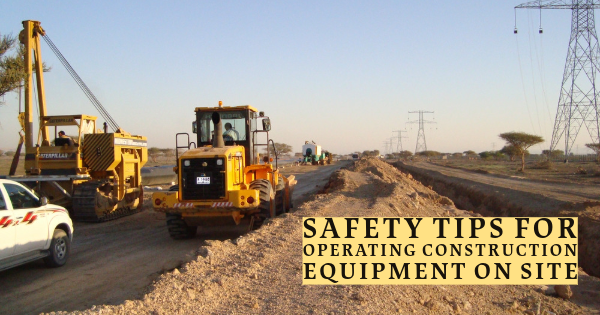Construction sites are bustling hubs of activity, where the efficient use of heavy machinery is crucial to project success. However, the operation of construction equipment comes with inherent risks that demand vigilant safety measures. Understanding and implementing best practices for equipment safety can substantially minimize accidents and enhance productivity. In this blog post, we will delve into key safety tips to ensure that everyone goes home safe and sound at the end of a hard day’s work.
Comprehensive Training
First and foremost, comprehensive training is fundamental. Each operator should receive detailed training on the specific machinery they are using to ensure they understand its controls and safety features. Whether it’s a crane, forklift, or rock crushing equipment, training should encompass emergency procedures and the recognition of potential hazards. Regular refreshers should be mandatory to keep everyone updated on the latest safety protocols and technological advancements. A well-trained team is the first line of defense against accidents on-site.
Proper Maintenance
Another critical safety measure is the proper maintenance and inspection of equipment. A routine check before operation can prevent unforeseen machinery failures that could lead to accidents. For instance, rock crushing equipment must be inspected for wear and tear on its components, as even minor faults can escalate into significant issues. Operators should work hand in hand with maintenance staff to ensure all machinery is functioning optimally. With over 919,000 construction establishments across the U.S. in the first quarter of 2023, according to AGC, adhering to rigorous maintenance schedules can significantly mitigate equipment-related incidents across such vast operations.
Clear Communication
Communication also plays a pivotal role in construction site safety. Clear and constant communication among team members ensures that everyone is aware of the ongoing activities and potential risks present. Utilizing hand signals, radios, or other communication tools can prevent mishaps, especially in environments where noise levels are high. This is particularly crucial when operating heavy machinery, such as rock crushing equipment, as it allows operators to coordinate movements and prevent accidental damage or injuries. Establishing a standard communication protocol helps in the coordination of actions, enabling swift responses to any incidents while promoting situational awareness.
The safe operation of construction equipment is a multifaceted endeavor that demands attention to training, maintenance, and communication. By prioritizing these elements, companies can safeguard their workforce while optimizing operation efficiency. As the number of construction sites continues to grow, cultivating a safety-first culture is paramount to reducing risks and protecting both personnel and projects.

